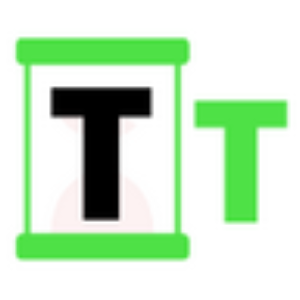EToro: Fantastic Recent IPO Offers International Exposure And Modest EBITDA Multiples
6 min read
Summary I’m initiating eToro with a buy rating as a compelling alternative to Robinhood, especially for exposure to Europe’s economic and market rebound. eToro’s global user base, with 70% in Europe, offers investors access to international markets and a broader selection of assets than Robinhood. The platform supports over 130 cryptocurrencies and stocks from 20+ global markets, plus new automated investment plans for UK and EU clients. Despite being smaller than Robinhood, eToro is showing respectable growth in funded accounts and assets under administration, supporting my bullish thesis. The stock trades at a very compelling ~13x forward adjusted EBITDA multiple (versus a >40x multiple for Robinhood). Amid sharp market volatility this year, Robinhood ( HOOD ) has benefited tremendously from boosted investor appetite in risk-taking. The rebound in equity markets plus healthy crypto trading activity has pushed the digital brokerage up more than 2x this year. But for this feeling like they missed out on Robinhood’s ascent this year, there’s an alternative: eToro ( ETOR ), a competing brokerage that went public in May of this year at $52 per share. EToro has had a rocky start, especially when we compare the company to Robinhood’s seemingly limitless ascent. The stock opened in the high $60s when it debuted in May, and despite the sharp recent market rebounds, eToro is still hovering in the mid-$60s today. Data by YCharts Though eToro is smaller and certainly has much less brand recognition in the U.S. (we note that most of its brokerage customer base is European), I view eToro more than simply just a poor man’s Robinhood. To me, this is a great way to gain exposure to improved macroeconomic prospects in Europe, plus capitalize on greater stock market participation globally as more and more investors gravitate to digital-only platforms. As such, I’m initiating eToro with a buy rating. eToro: A Europe-focused brokerage with a broad selection of crypto and international stocks First, let’s get a good grounding on eToro’s platform, and how it differs from the brokerages that most U.S. investors are more familiar with. eToro launched as a digital-first brokerage just like Robinhood, but was founded in 2007 – preceding Robinhood by about six years. The company is currently headquartered in Israel. One of the core differences between eToro and Robinhood is the more global profile of eToro’s user base. Robinhood is only available fully in the U.S. and the U.K., and on limited basis (crypto trading only) in the UK. eToro’s platform, meanwhile, is truly global; but with a 70% concentration of users within Europe, while only ~10% of the company’s customers are in the Americas, as shown below: eToro scope (eToro Q1 earnings deck) Scale wise, we note that eToro is much smaller than Robinhood, with a total of $14.8 billion of assets on its platform. By comparison, Robinhood’s total platform assets recently crossed the $250 billion mark. What makes eToro attractive to me, however, are two drivers. First: eToro offers U.S. investors a great way to invest into a potential European macroeconomic rebound. European stocks have soared this year, dramatically outperforming the S&P 500 – and with this, market participation rates in Europe may rise to levels that are more comparable to the U.S. over time. Second: eToro arguably has a broader selection of investible assets, relative to Robinhood. Robinhood’s advantage lies in its focus toward U.S. users and offering retirement accounts (Roth and Traditional IRAs) – whereas eToro, with its multi-national client base, does not offer any coordinated retirement plans. However, the company’s scope is actually much broader, offering over 130 different cryptocurrencies as well stocks in over 20 different global stock markets, including the U.S. The chart below showcases eToro’s full platform capabilities and recent release. Key product initiatives this year include rolling out automated investment plans, aimed at helping UK and EU customers invest money into stocks, ETFs, and crypto at fixed monthly contribution rates. eToro platform (eToro Q1 earnings deck) Respectable growth in funded accounts and AUA eToro’s core growth strategy revolves around offering as many global crypto and stock investment options as possible to draw in the widest net of investors as possible. And though eToro is still at a relatively small scale, we have ample data to back up the company’s success. As of Q1 (the March quarter), eToro has grown to 3.58 million total funded accounts, adding 0.1 million net-new paid accounts since the end of Q4. eToro funded account growth (eToro Q1 earnings deck) The company’s assets under administration, or AUA (equivalent to Robinhood’s AUC, or assets under custody metric), meanwhile, has grown 21% y/y to $14.8 billion. An impressive $2.8 billion, or 19% of this balance, sits in cash: on which eToro is able to earn healthy net interest income. The remainder is invested into crypto and equities. eToro AUA growth (eToro Q1 earnings deck) We note that net deposits into eToro have surged of late. In Q4 and Q1 of this year, total money transfers into eToro totaled $2.9 billion and $2.7 billion, respectively: growing substantially versus $1.5 billion and $2.2 billion in the prior-year Q4 and Q1. Again, we emphasize here that healthy market performance, particularly in Europe where more than two-thirds of eToro’s customer base resides, is helping to fuel greater and broader market participation. eToro doesn’t focus on revenue, but instead its principal top-line metric is “net contribution” – which is essentially defined as the company’s profit from its market-making activities in equities and cryptocurrencies, plus its net interest income as well as revenue from other streams, such as eToro Money (payments and transfers) and its subscription plans. As shown in the chart below, what we like is that eToro doesn’t necessarily have an outsized reliance on cryptocurrencies, which generated “only” 21% of the company’s $217 million in total net contribution in its most recent quarter. Net interest income of $50 million in Q1 also grew 11% y/y, with growing cash balances and funded accounts helping to offset the headwinds from recent cuts to interest rates. eToro net contribution growth (eToro Q1 earnings deck) Profitability and valuation Where the bulk of my bull case for eToro lies, however, is in the fact that the company has consistently generated healthy bottom-line profits, and the stock is also only modestly valued against those profits. eToro adjusted EBITDA (eToro Q1 earnings deck) As shown in the chart above, eToro generated $80 million of adjusted EBITDA in its most recent quarter, or a 37% margin against its net contribution. Over the prior two quarters, the company’s $188 million of adjusted EBITDA clocked in at an even higher 40% margin, and grew at a 47% y/y pace. Against its current levels of profitability, eToro appears quite modestly valued. At current share prices near $63, eToro trades at a market cap of $5.34 billion. After we net off the $835.8 million of cash, short-term investments, and crypto on eToro’s balance sheet against $115.3 million of funds owed to users, the company’s resulting enterprise value is $4.62 billion. Meanwhile, for FY26, Wall Street analysts are currently expecting eToro to generate $900.6 million in net contribution. If we apply a 40% adjusted EBITDA margin against that revenue profile (consistent with average margins over the past two quarters), eToro’s adjusted EBITDA would be $360.2 million. We note this is still a rather conservative expectation that’s below the $188 million adjusted EBITDA run-rate that the company generated over the past two quarters. This puts eToro’s valuation at 12.8x EV/FY26 adjusted EBITDA. As can be seen below, Robinhood trades at a much higher ~46x forward multiple. Data by YCharts The more modest compare is Interactive Brokers ( IBKR ), trading at a single-digit multiple of adjusted EBITDA. However, eToro arguably deserves a broad premium versus Interactive Brokers, due to its exposure to crypto and its more rapid adjusted EBITDA growth rates. Risks and key takeaways Of course, with a small cap and internationally focused stock like eToro, we also have to be mindful of a number of risks that the company faces. In my view, the principal risks are as follows: Current market bullishness can fade, which may dampen trading activity and reduce eToro’s net contribution The company swung to a negative net contribution on crypto in Q1, signaling its willingness to invest in lower and unprofitable spreads in order to induce trading. If this continues, however, the company’s profitability growth may be stunted. Competition: eToro is a relatively small brand in a sea of online brokers. eToro faces stiff competition particularly from other crypto exchanges like Coinbase and Binance, all of which are also global players. This being said, I still continue to see far more positives than negatives for eToro, especially at a relatively undemanding low teens forward adjusted EBITDA multiple. To me, the fact that eToro’s stock hasn’t taken off post-IPO offers a great opportunity for investors to gain crypto-trading as well as international/European exposure at a reasonable valuation. Stay long here.

Source: Seeking Alpha


